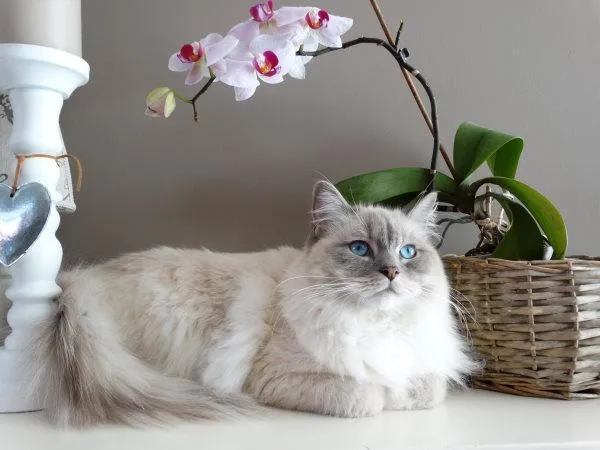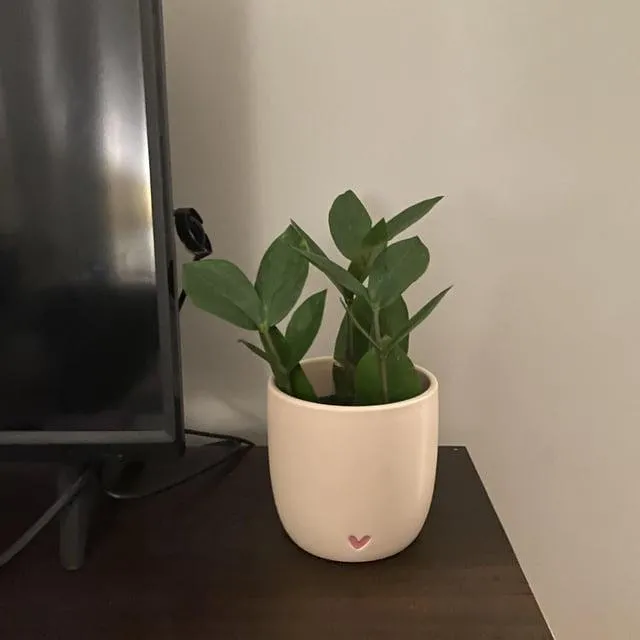Can You Keep Hoya Plants With Cats?
If you’re a cat owner who enjoys houseplants, keeping hoya carnosa plants may seem like an attractive option. Hoyas are low-maintenance and produce attractive flowers, so they’re popular indoor plants. However, you may wonder if your furry friends will find them as appealing as you do. In this article, I’ll explore the interactions between hoya plants and cats and provide tips for keeping both happy.
Are Hoya Plants Toxic to Cats?
The good news is that hoya carnosa plants are considered non-toxic to cats. While some common houseplants like lilies or philodendrons can cause serious illness or even death if ingested by cats, hoya is safe for felines to be around. From my experience as a plant owner and former veterinary technician, most healthy houseplants pose little toxicity risk on their own. The bigger concern is usually behaviors that could irritate or endanger cats.
Will Cats Chew on or Eat Hoya Plants?
It’s certainly possible for curious cats to taste or chew on hoya plants, as they will inspect and bat around any new object in their environment. However, hoyas aren’t particularly appealing to cats as a food source. Their waxy leaves don’t offer much in terms of taste or nutrients. I’ve found that well-fed cats usually ignore hoya plants after an initial sniff. The situation may be different with cats that don’t get enough stimulation or are frequent plant chewers in general.
Other Potential Problems with Cats and Hoyas
Even if hoya plants are non-toxic, there are still some interactions cat owners need to be aware of:
- Potential disturbance of the soil: Cats may paw at loose potting media or knock over smaller pots, possibly leading to spills or messes.
- Scratching of stems: Determined cats may scratch hoya vines, potentially damaging or breaking them. Their waxy leaves also don’t feel great under claws.
- Droppings in soil: It’s not uncommon for cats to use potting soil as a litter box substitute. This can introduce bacteria, parasites or other issues.
- Spread of outdoor bacteria/pests: Paws tracking in dirt, sand or other substances could expose houseplants.
The risk of these issues depends a lot on individual cat behavior and supervision levels in the home. Overly rambunctious cats may be less suitable plant companions than more mellow felines.

Tips for Keeping Hoyas and Cats Happy
With some basic precautions, it’s totally possible to enjoy hoyas and cats together:
- Choose a location away from high-traffic cat areas. Put plants up high if possible or behind barriers cats can’t easily reach.
- Use secure, spill-proof pots. Heavy ceramic or plastic is more stable than lightweight pots. Consider hanging pots out of reach too.
- Don’t use loose potting media. Opt for pressed soil discs, moss poles or other substrates cats can’t disturb as easily.
- Trim scratchable vines or protect trunks. Apply aluminum foil, plastic wrappings or nail polish around tempting stems until cats lose interest.
- Provide alternative scratching posts. Give cats acceptable outlets to redirect natural scratching behaviors away from plants.
- Watch for early signs of stress. Remove any plant a cat seems anxious about before chewing or other issues develop.
With diligent precautions and cat-proofing, the risks of conflicts between hoyas and felines are quite low. It’s important to thoroughly cat-proof any area you put plants in. Cats will always need supervised access if plants are present.
Making Peace When Confrontations Occur
Despite your best efforts, an ambitious cat may still decide to sample a hoya leaf or two. Rather than punishment, which tends to increase stress, here are some compassionate steps:
-
Gently remove the cat from the plant and redirect to an acceptable spot. Praise or reward them there with treats or petting so they associate good things with that area instead.
-
Give the plant area a thorough cleaning if any droppings, vomit or soil was ingested. This reduces risks of parasites spreading.

-
Do a health check on the cat. Monitor their behaviors and appetite over the next few days in case an upset stomach results. Veterinary attention if anything seems off.
-
Reinforce your home’s plant and cat areas have clear boundaries through barriers or deterrent sprays. Reward cats for leaving the plants alone.
With patience and problem-solving like this, you can teach cats that houseplants simply aren’t places for them to play or cause problems. Remove access as needed until positive associations are rebuilt. Relapses may occur at times, but keep responses calm and educational for best results.
Bringing Out the Best in Both Cats and Plants
With some modifications around their plant habitats, it’s totally possible for animal lovers to nurture thriving hoyas and happy feline friends at the same time. With supervision, patience and a problem-solving approach, both houseplants and furry family members can coexist. It takes work but is worthwhile to blend our passions for greenery and our pets.
I hope this overview gave you a better idea how cats and hoya plants tend to interact. By taking a few basic precautions and managing expectations, most cat owners find they can peacefully keep hoyas and other non-toxic houseplants. Let me know if you have any other questions!

Hoya Carnosa Care for the Window Watcher
| Plant Type | Vine, succulent |
|---|---|
| Bloom Period | Spring through fall |
| Watering | Allow soil to dry out between waterings. Water just enough to keep the soil moderately moist. |
| Light | Bright, indirect light. Too much direct sun can scorch leaves. |
| Fertilizer | Feed monthly in spring and summer with a dilute liquid fertilizer for succulents and flowering plants. |
| Temperature | Keep above 50°F. Can tolerate temperatures down to 45°F for short periods. |
| Humidity | Moderate. Mist foliage occasionally if air is very dry. |
| Propagation | Take 4-6 inch cuttings in spring. Remove lower leaves and place stem in water or potting mix. |
FAQ
-
Can hoya carnosa climb on cats?
Basically, hoya carnosa plants normally won’t climb on cats. They mainly use things like walls and trees for support. However, if a curious kitty decides to interact with the plant, it’s possible the vines could end up wrapped around the animal kinda by accident. The cat would likely just walk away though and the vines would fall off.
-
Do cats like to nibble on hoya leaves?
Some cats might chew on hoya leaves every now and then simply out of curiosity. Most cats aren’t too interested in the leaves though and would rather go for catnip toys or real food. Still, it’s probably best to keep plants up high or behind closed doors just to be safe since a few nibbles from cats could damage the foliage.
-
Will hoya carnosa harm cats if ingested?
While hoya itself is not typically toxic to cats, there’s always a chance a kitty might get an upset tummy from nibbling the plant. The sap could potentially cause mild irritation in the mouth too. However, cats would need to eat a lot of leaves for it to become a serious problem. Mostly it’s just not really good for them nutritionally. I’d question why any cat would want to consume a whole plant anyway!
-
Can hoya pollen cause allergic reactions in cats?
Potentially, yes – like people, some cats may have allergies to certain pollens. Although hoya pollen alone rarely puts cats at risk, those with sensitivities could experience sneezing, watery eyes or skin irritation if exposed. Keeping plants out of main living areas would lessen the risk. But in reality, many cats display no reaction to hoya pollen whatsoever.
-
What’s the best way to protect hoya from cats?
The most effective techniques involve putting the plant in a high location, using a hanging basket or mounting it on a tall rack. Maybe even a decorative spider web could deter curious kittens! You might also try placing the pot inside a mesh cover or cage. Repellents like citrus scents can work to some extent, but won’t stop a truly determined feline. Ultimately, supervision is key when cats and plants coexist under one roof.

In conclusion, while hoya carnosa is generally not very harmful to cats, it’s still best to take some precautions to prevent kitties from playing with or nibbling the plant. With a little common sense and an appealing scratching post as an alternative, both cats and hoyas can live together peacefully! Let me know if you have any other questions.
